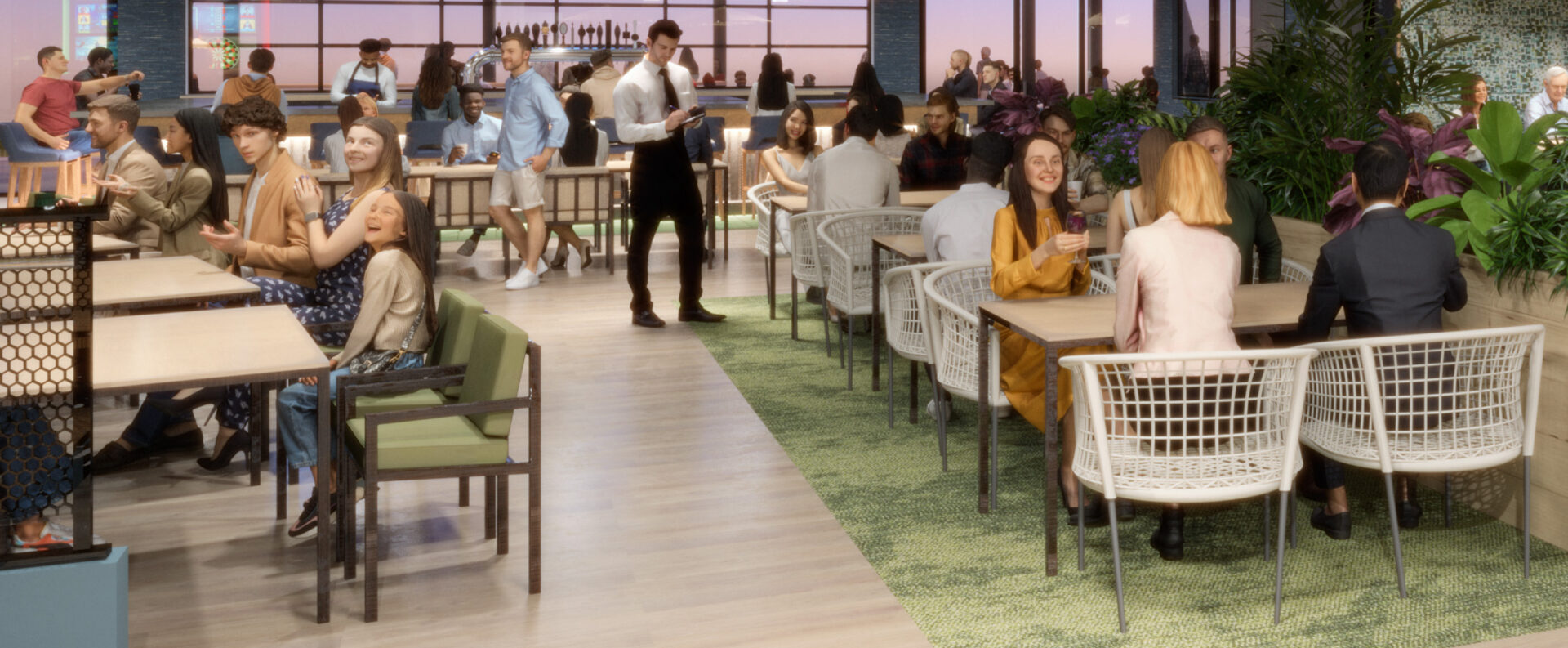Lifelike CG humans are revolutionizing architectural visualizations, bridging the gap between realism and the uncanny valley. Have you ever looked at computer-generated (CG) humans in architectural visualizations and felt something was off? Or perhaps you’ve seen renders using photo clips of real people where the lighting and camera angles just don’t match? That uncanny feeling is not just you—it’s a common challenge in our industry. At J. Scott Smith Visual Designs, inc. , we’ve been tackling this head-on, and we’re excited to share our journey of bringing CG humans to life using cutting-edge AI technology.
The Challenge: The Uncanny Valley and Mismatched Photo Clips
For years, the architectural visualization industry has grappled with two major issues when populating scenes with people:
- The “uncanny valley”—that unsettling feeling you get when looking at almost-but-not-quite-realistic CG humans. These digital people often appear lifeless, with a zombielike quality that can detract from otherwise stunning visualizations.
- The use of photo clips, which often stand out due to mismatched lighting, perspective, or resolution, breaking the illusion of a cohesive space.
Our Solution: Harnessing AI for Lifelike CG Humans
We’ve found a game-changing approach: leveraging advanced AI to enhance our CG humans. Here’s what this means for our projects:
- Breathing Life into Pixels: Our AI-enhanced process doesn’t just improve faces—it creates unique individuals with personality and vitality, avoiding both the uncanny valley and the mismatched look of photo clips.
- Diversity that Reflects Reality: Say goodbye to clone armies in your visualizations or the limited diversity of stock photos. Our approach allows for a wide variety of faces, body types, and clothing styles.
- Cost-Efficiency: This method significantly reduces the need for purchasing endless 3D models or licensing a vast library of photo clips to represent different demographics and styles.
- Engagement that Wows Clients: The increased realism and diversity in our visualizations from lifelike CG humans creates more engaging and relatable spaces, keeping clients coming back for more.
The Transformation: Seeing is Believing
While we can’t share full project images, these cropped comparisons speak volumes:




Behind the Scenes: Our Approach
While we leverage a dizzying array of cutting-edge tools in our process, (including magnific in this case) for initial face enhancements, the magic lies in how we apply and refine these tools. Our team’s expertise in selecting, adjusting, and post-processing the AI-generated results is what truly bridges the uncanny valley.
The journey from a standard 3D model to our final, lifelike CG human result involves multiple steps, careful curation, and artistic refinement that goes far beyond simply using an AI tool. It’s this holistic approach—combining technology with human artistry and industry knowledge—that sets our visualizations apart.
Why This Matters for Your Projects
- Realism that Resonates: Create visualizations that truly connect with your audience, as well as adding life and scale.
- Diverse Representation: Easily showcase the diversity of potential users in your spaces.
- Cost-Effective Solution: Reduce expenses on purchasing varied 3D human models or extensive photo libraries.
- Competitive Edge: Stand out in a crowded market with noticeably superior visualizations.
Looking Ahead: The Future of CG Humans in ArchViz
As AI technology continues to evolve, we anticipate even more exciting developments in this field. At J. Scott Smith Visual Designs, inc. , we’re committed to staying at the forefront of these innovations, ensuring our clients always have access to the most diverse and lifelike CG humans possible.
Are you ready to take your architectural visualizations to the next level, free from uncanny CG humans or mismatched photo clips? Let’s talk about how we can bring your vision to life – quite literally and economically.


0 Comments